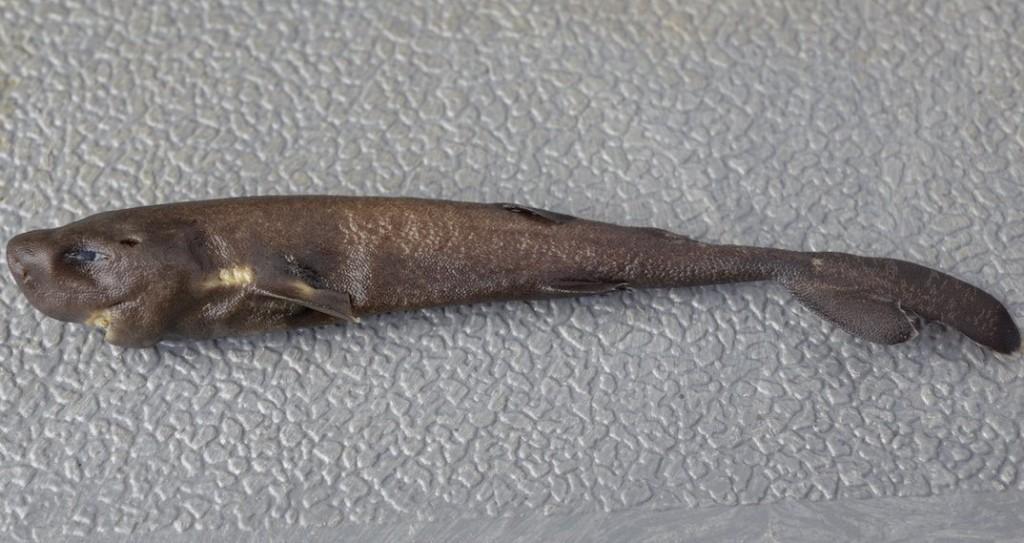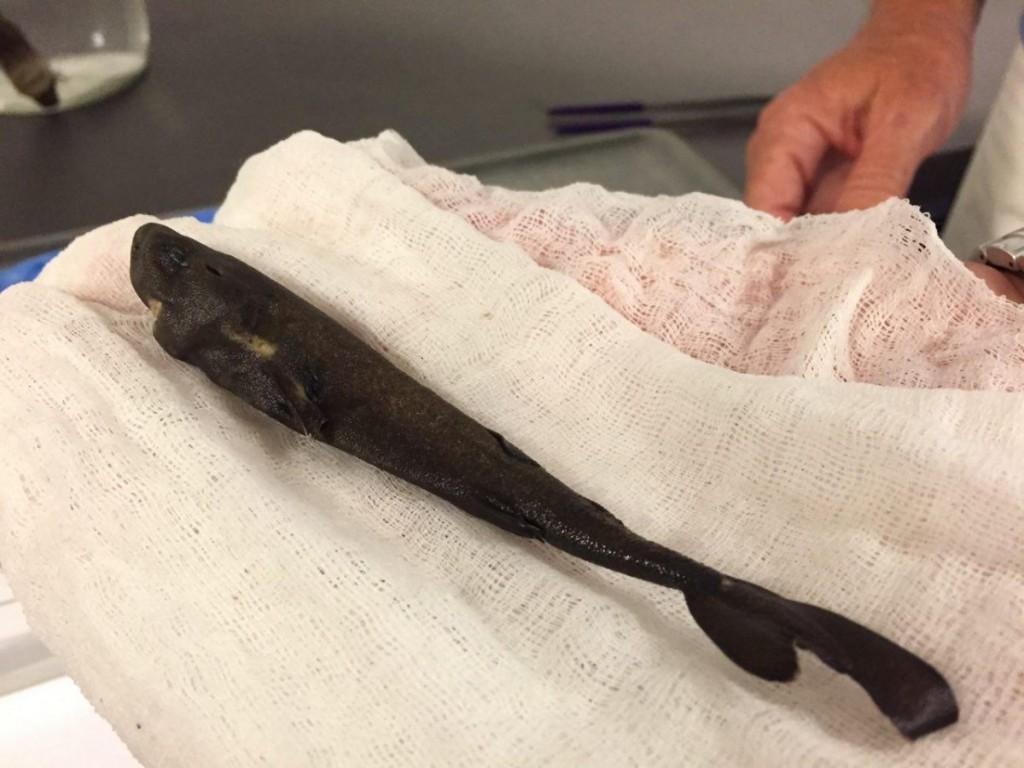While the most famous 3D printed shark is one based on Katy Perry’s Super Bowl dance partner, fraught with legal issues as it may have been, a new shark has entered the 3D printing scene. In the case of this latest small shark to come off a 3D printer, we can’t really gauge its dancing ability–because it’s a replica of a pocket shark, and only the second one to ever have been found.
In 1979, a shark was found off the coast of Peru. The small creature, which can in fact fit in a regular pocket (though this isn’t where its common name originates), was dubbed Mollisquamas parini. That shark, a female, was the only specimen of this elusive species to be discovered until 2010, when a National Oceanic and Atmospheric Administration (NOAA) mission off the coast of Louisiana happened to accidentally snag a baby male pocket shark in its buckets on a study of sperm whale feeding habits. The tiny shark was so young, in fact, it still had an umbilical scar that had not yet healed, according to Mark Grace of NOAA Fisheries’ Pascagoula, Mississippi Laboratory. Grace was the lead author of the NOAA’s new study about this rare species.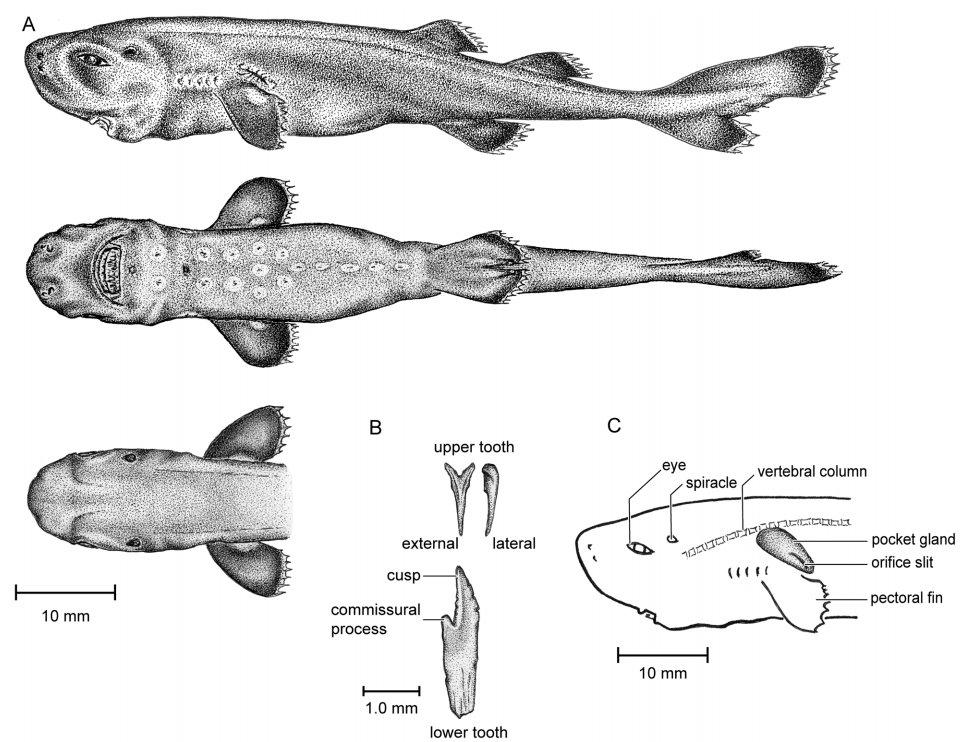
“The pocket shark we found was only 5 and a half inches long, and was a recently born male,” said Grace. “Discovering him has us thinking about where mom and dad may be, and how they got to the Gulf. The only other known specimen was found very far away, off Peru, 36 years ago.”
The shark–named for a “pocket” above its pectoral fin–was identified through a tissue sample collected several years after the 2010 mission from the frozen specimen, with the help of Michael Doosey and Henry Bart, researchers from Tulane University, as well as genetics expert Gavin Naylor of the NOAA Ocean Service. The sample, run against a database of Tulane University Biodiversity Research Institute (TUBRI), tied the new find to the 36-year-old first example of the pocket shark. Genetics tie the pocket shark to other shark species such as the kitefin and cookie cutter, both also in the Dalatiidae family.
“This record of such an unusual and extremely rare fish is exciting, but its also an important reminder that we still have much to learn about the species that inhabit our oceans,” Grace added.
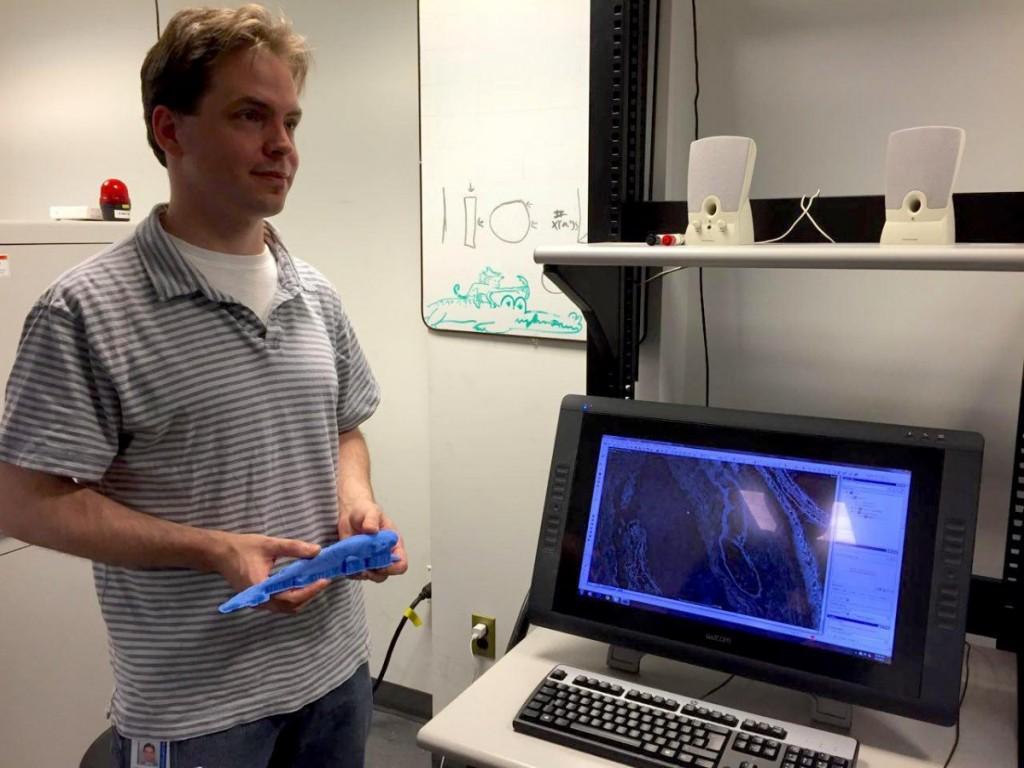
John Denton, an Axelrod Fellow at the American Museum of Natural History, studies data on the scan and 3D printed model of the pocket shark
Because only two of these sharks have ever been found and documented, the 14.6 gram fish is an exceptionally rare commodity for the study of biology. Damaging the only known sample (which is currently housed in the Royal D. Suttkus Fish Collection at TUBRI) is certainly best avoided, and in order to better study its anatomy, a detailed sectional body scan was taken. Grenoble, France-based European Synchrotron Radiation Facility offers technology about one million times more powerful than a standard X-ray machine, and after 18 hours of scans, scientists were provided with 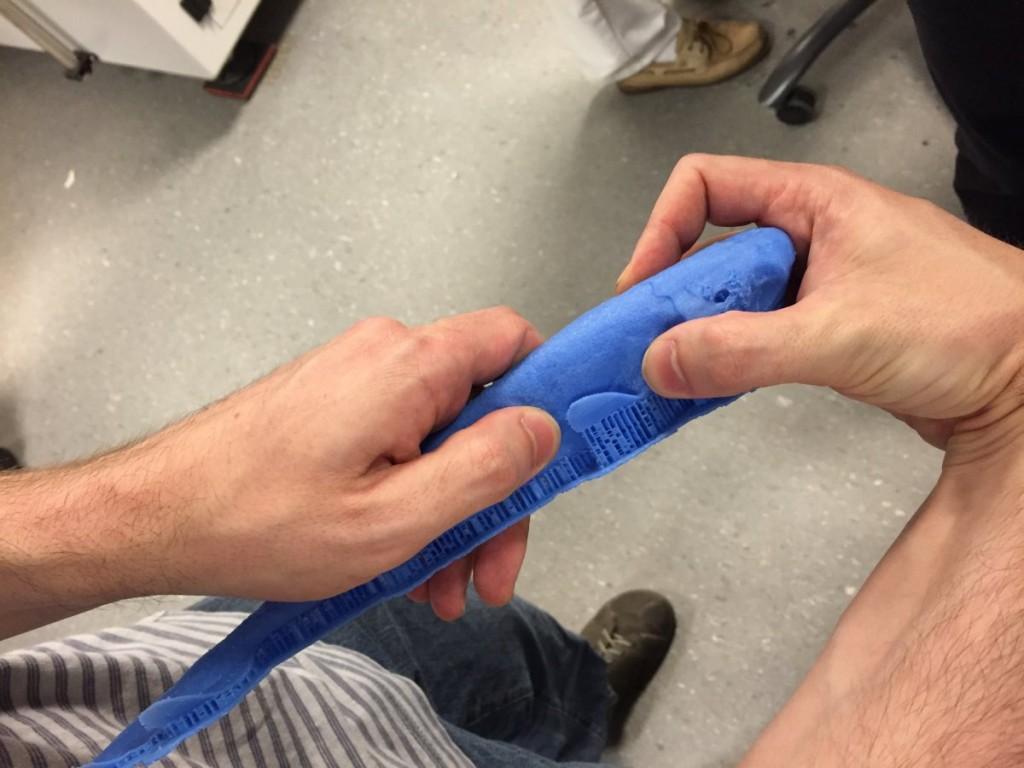 22,000 cross-sectional images to study in detail.
22,000 cross-sectional images to study in detail.
American Museum of Natural History biologist John Denton and his colleagues additionally offer digital files for the incredibly detailed CT scan in order to study ocean creatures. The Shark Tree of Life available on the same page details the relationships between various species of sharks.
In order to get a truly hands-on look at the pocket shark’s unique anatomy, the scientists created a 3D printed model. The details from the digital files translated well to the 3D printed pocket shark and enabled a closer look at the full physical scale of the creature.
Being able to touch the shark allows for a better understanding of its physiology, such as teeth (which helped date the appearance of the first pocket shark to about 50 million years ago) and its mysterious pocket. While the mystery of the pocket has not yet been solved, the close examination of this specimen now makes this and other illuminations on the shark’s nature more likely.
Do you know of other successful anatomical studies made possible through 3D printed models made from precise scanning? Let us know over in the 3D Printed Pocket Shark forum thread at 3DPB.com.
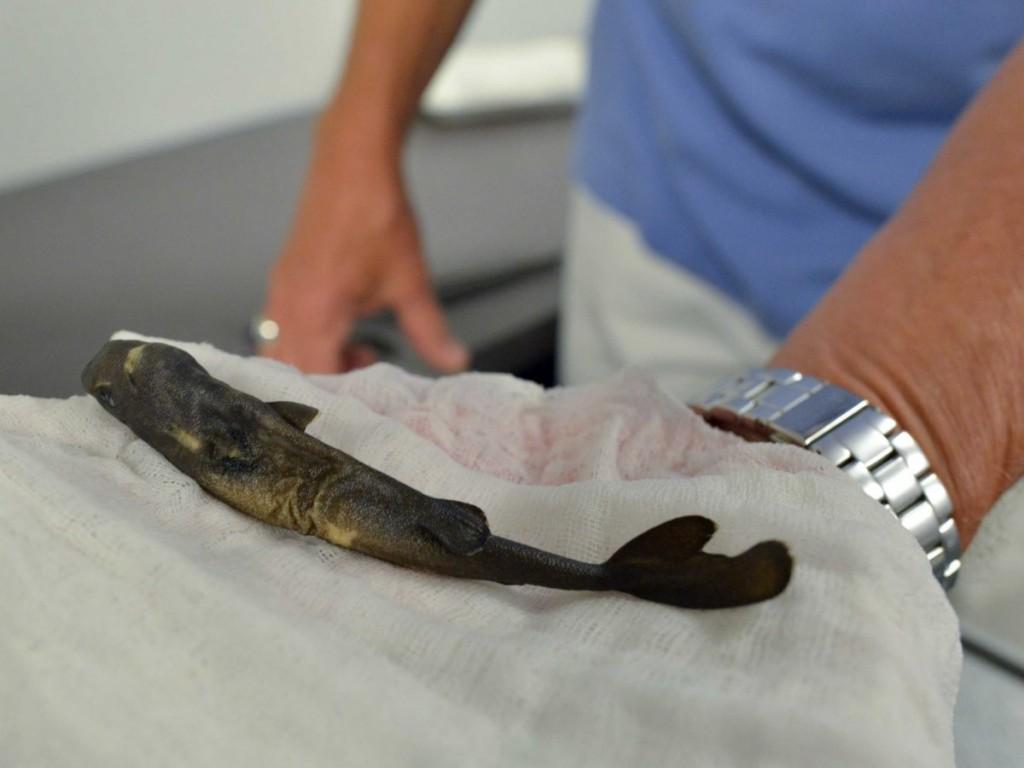
Subscribe to Our Email Newsletter
Stay up-to-date on all the latest news from the 3D printing industry and receive information and offers from third party vendors.
You May Also Like
IperionX Inks 10-Year Deal with Wisconsin Manufacturer for 80 Metric Tons of Titanium Per Year
IperionX, the Charlotte-based supplier of sustainable titanium powders used for additive manufacturing (AM) and metal injection molding (MIM), has signed a ten-year deal with United Stars, a group of industrial...
Gastronology Launches Industrial Production of 3D Printed Food for Dysphagia Patients
Food 3D printing has, in many ways, been an additive manufacturing (AM) segment looking for the right business case. While some applications are beautiful and others may or may not...
Lockheed Martin Leads $3M Investment in Q5D’s Electronics 3D Printing System
Q5D, an original equipment manufacturer (OEM) of robotic arm, hybrid additive manufacturing (AM) systems used for wire harness production, has closed a $3 million investment round. The investment arm of...
3D Printing News Briefs, April 6, 2024: Depowdering, Cybertruck Door Handles, & More
In today’s 3D Printing News Briefs, ioTech’s digital manufacturing CLAD technology is opening up opportunities for microelectronics and additive manufacturing. Hexagon and Raytheon Technologies commercially released the Simufact Additive Process...


